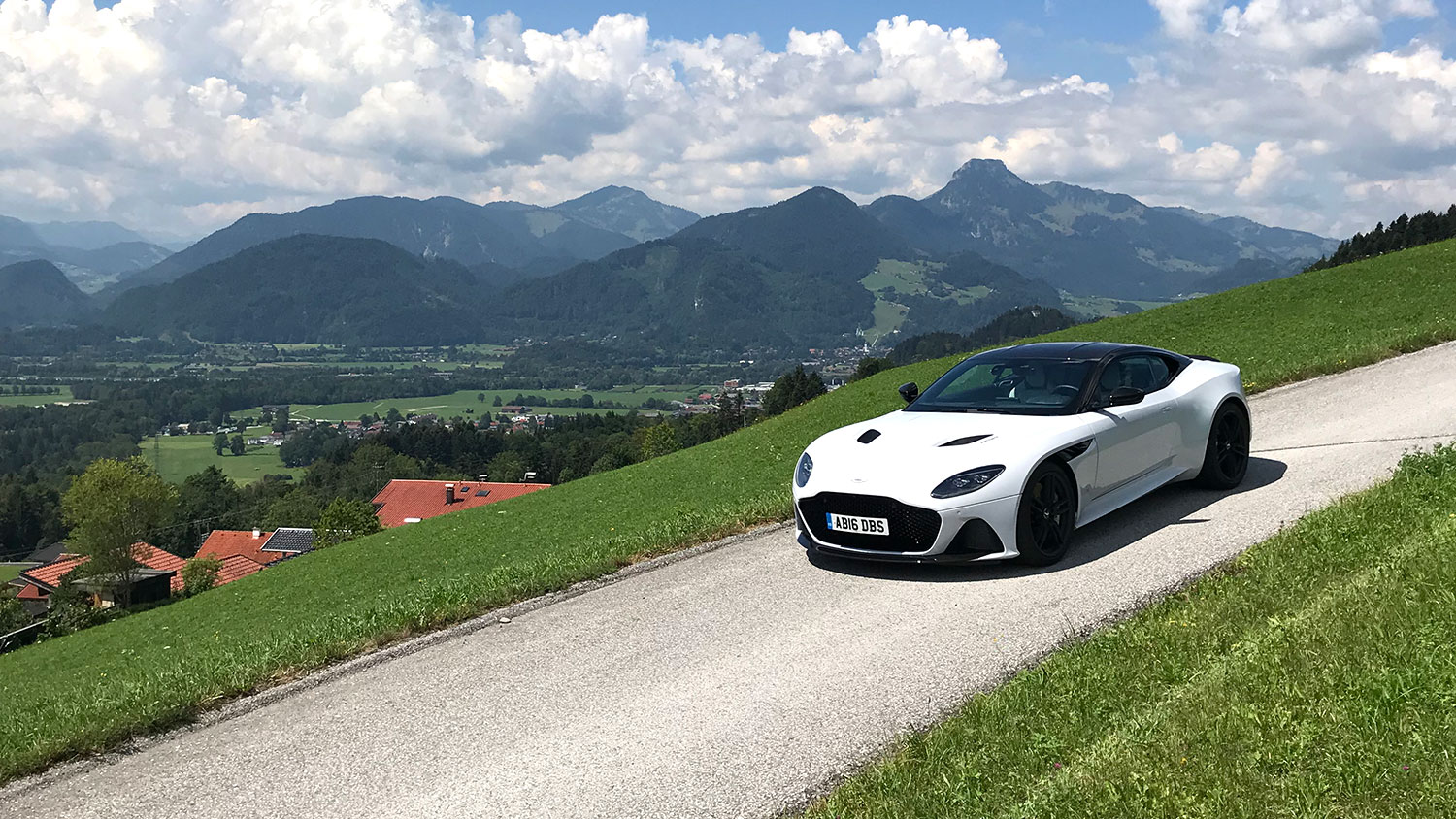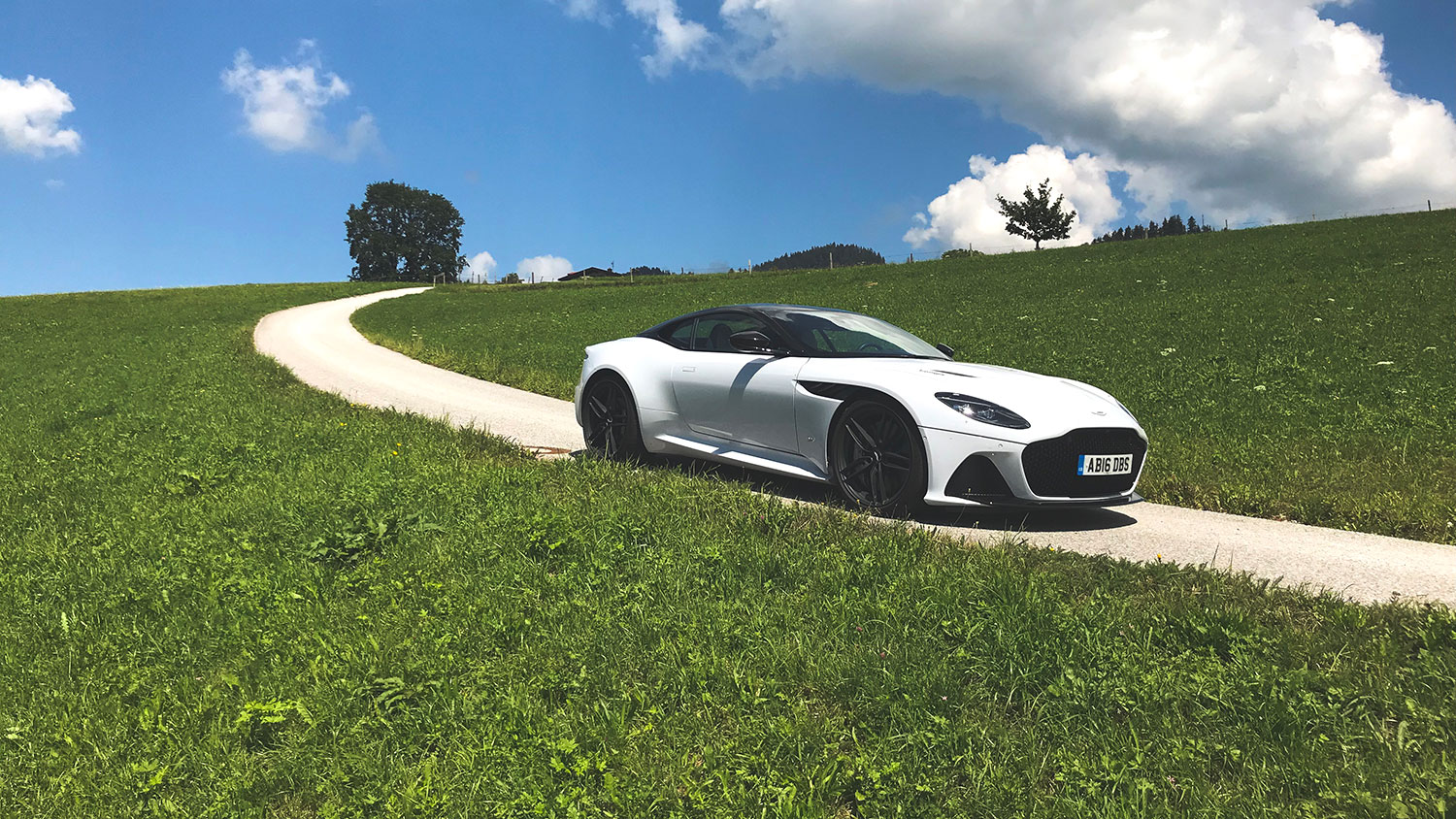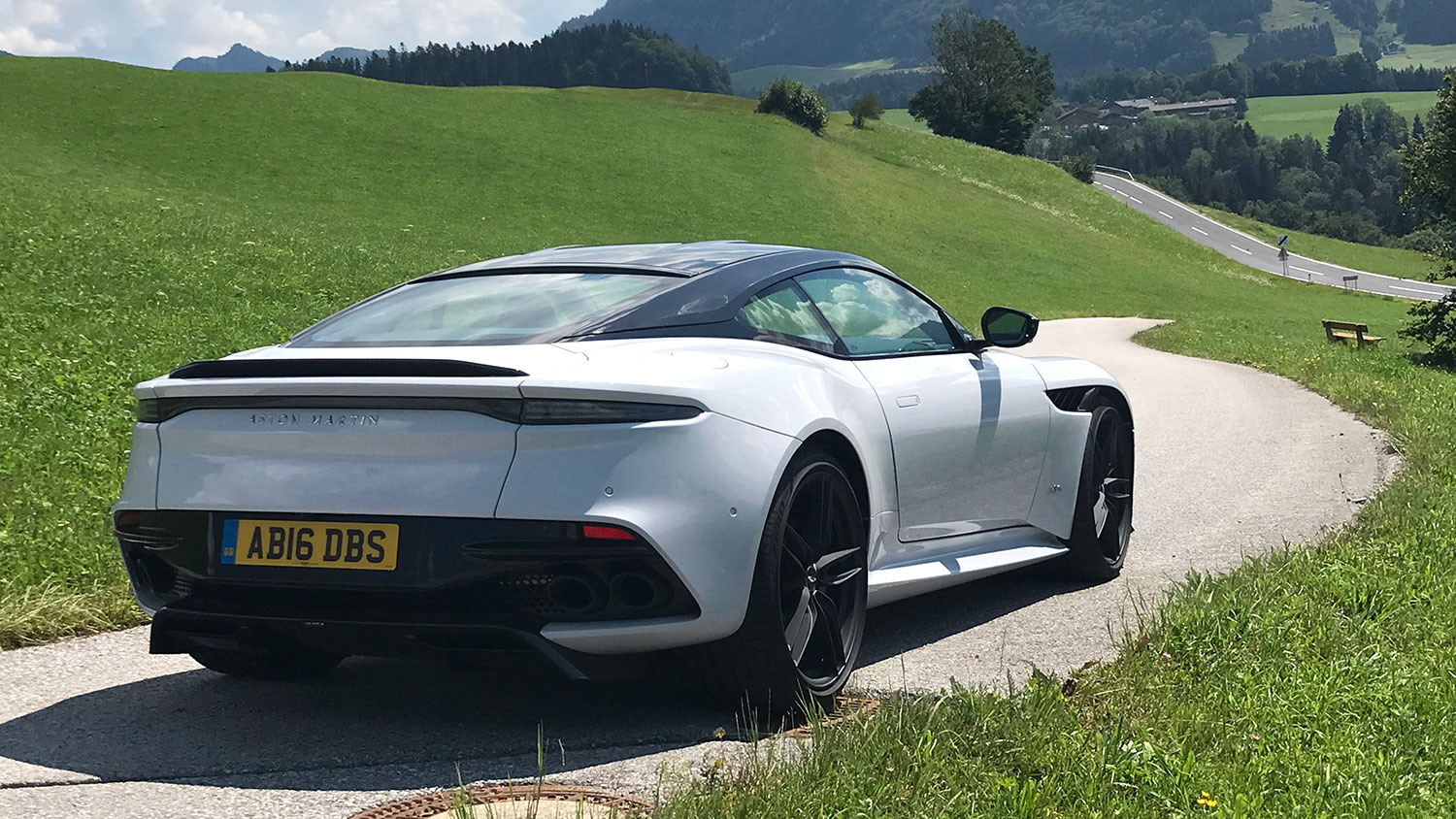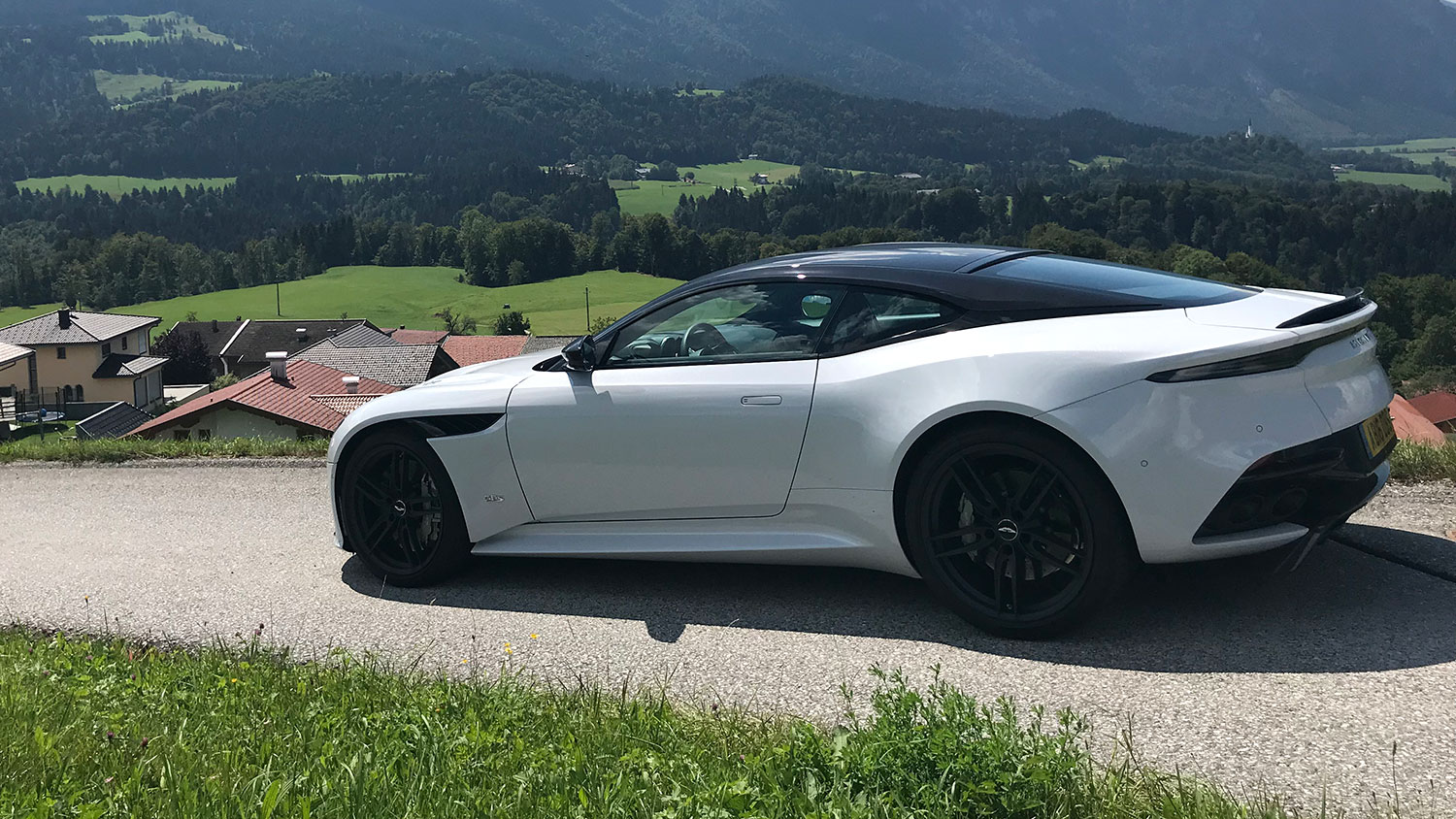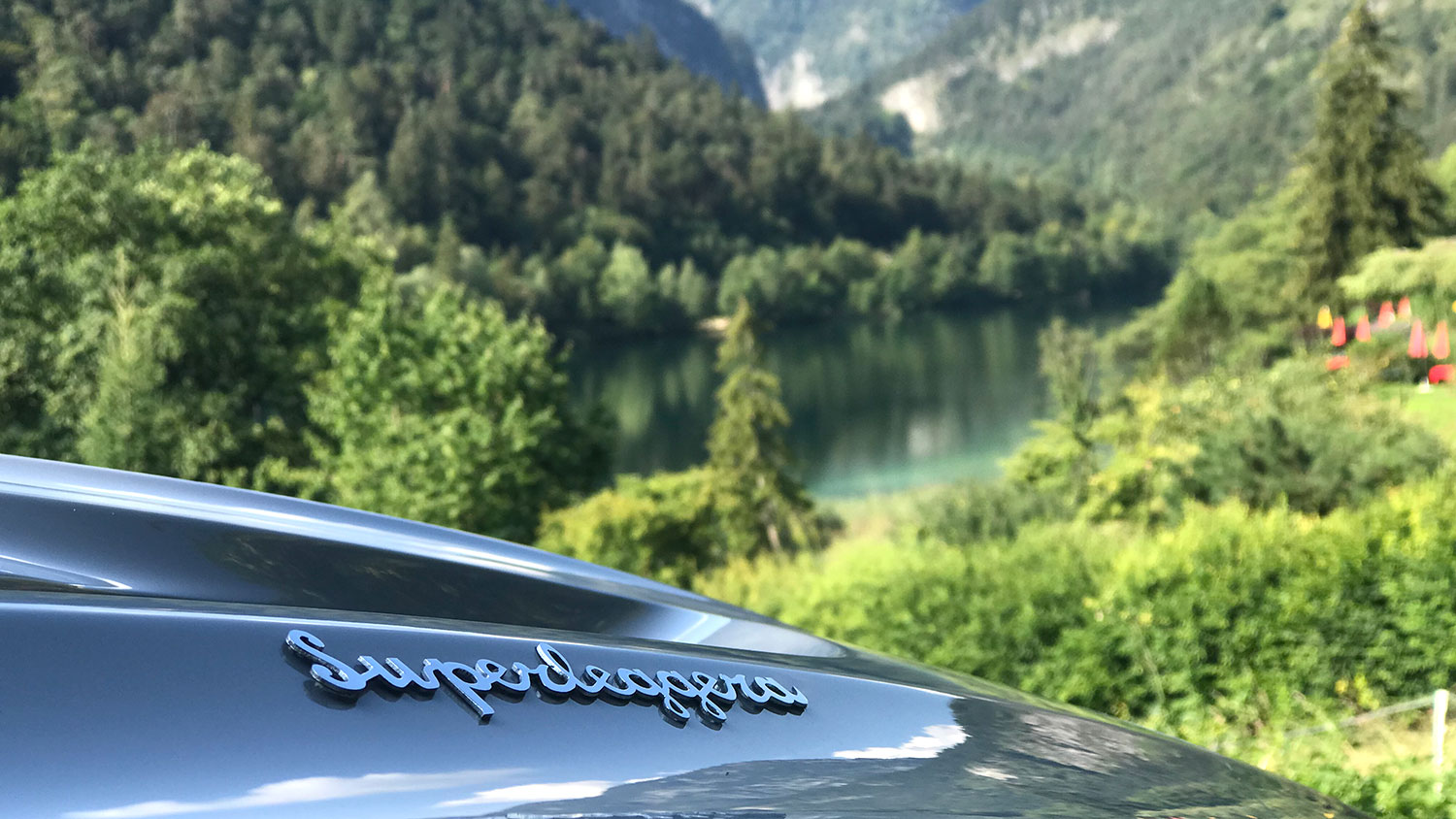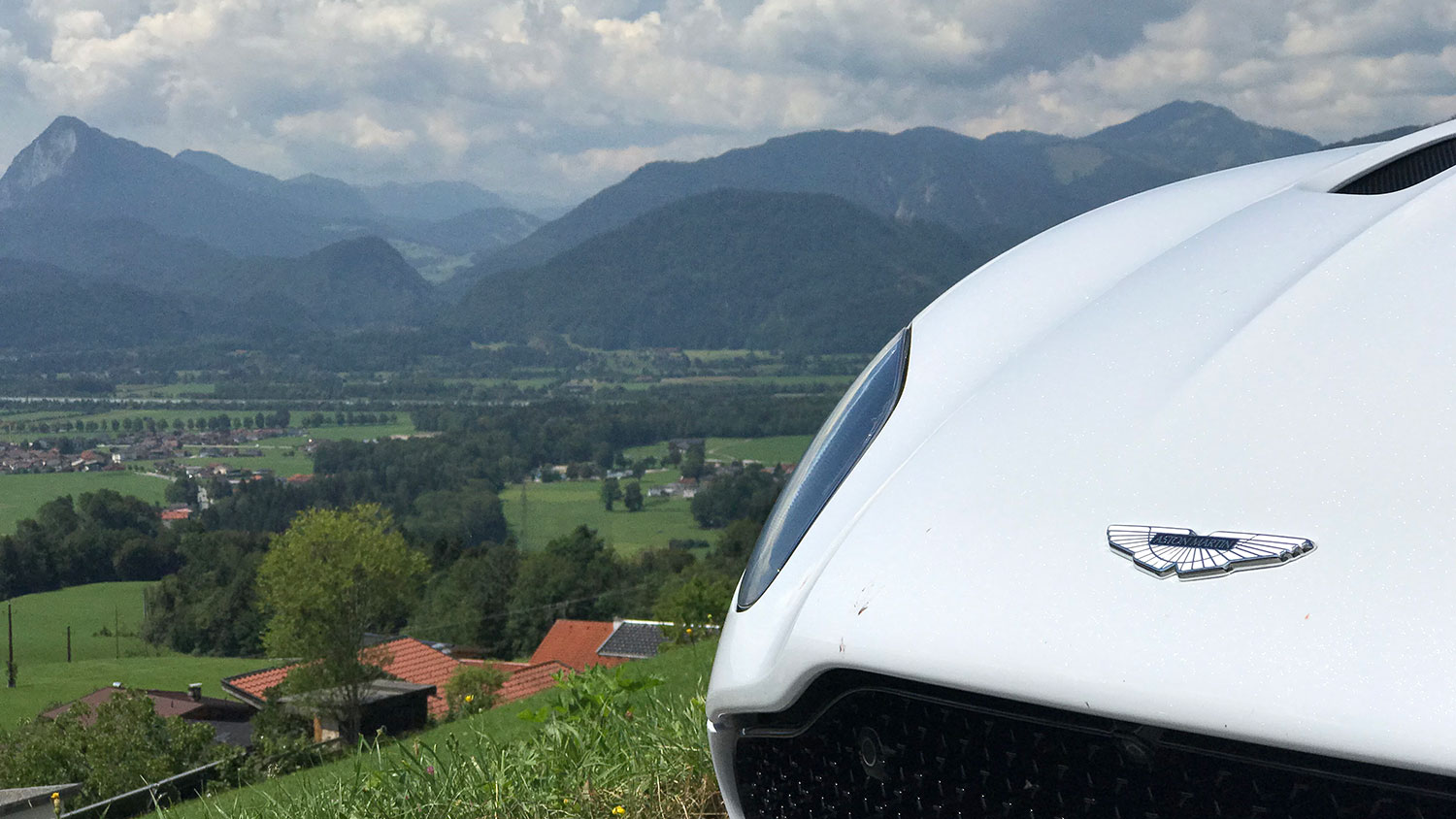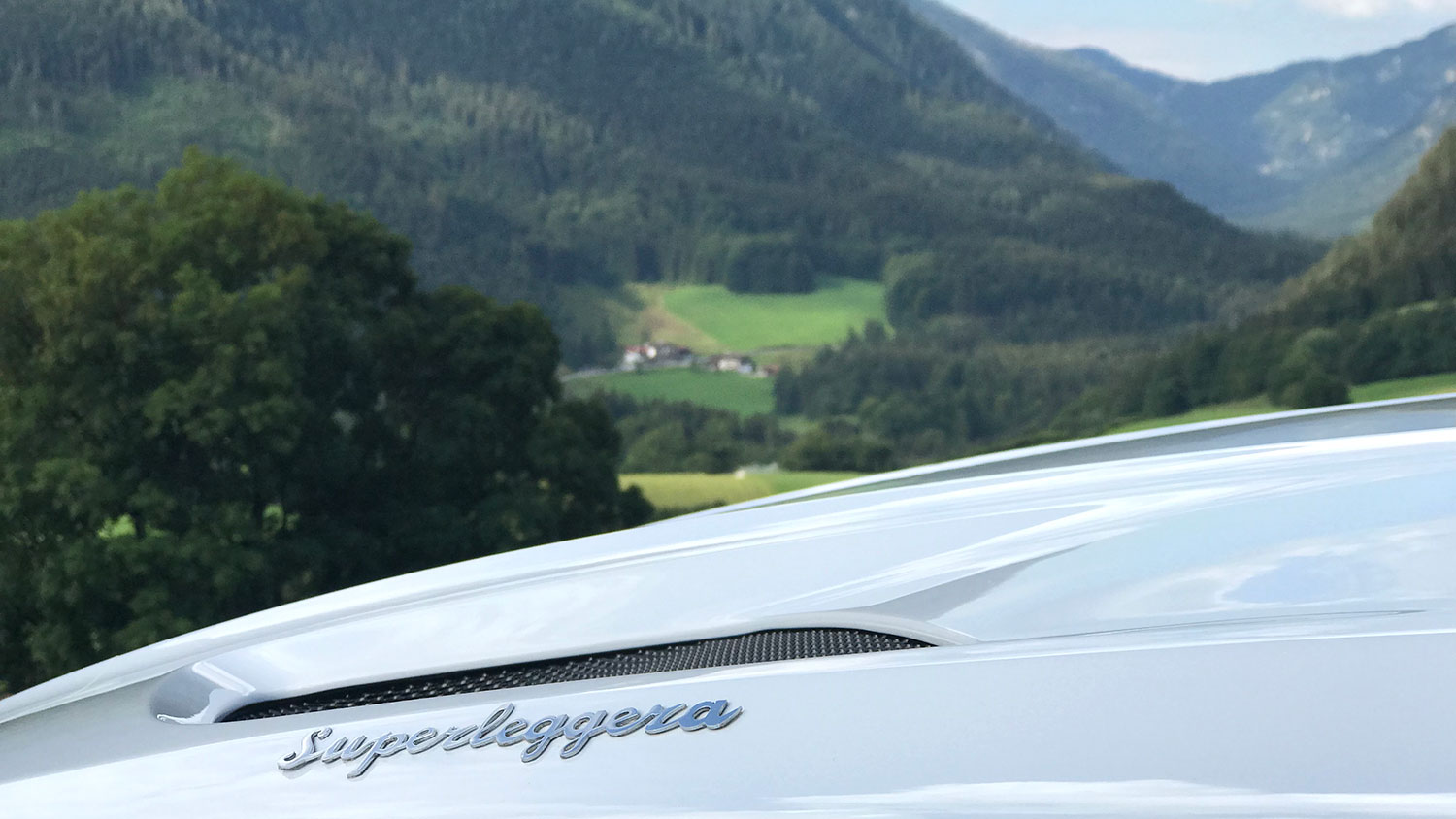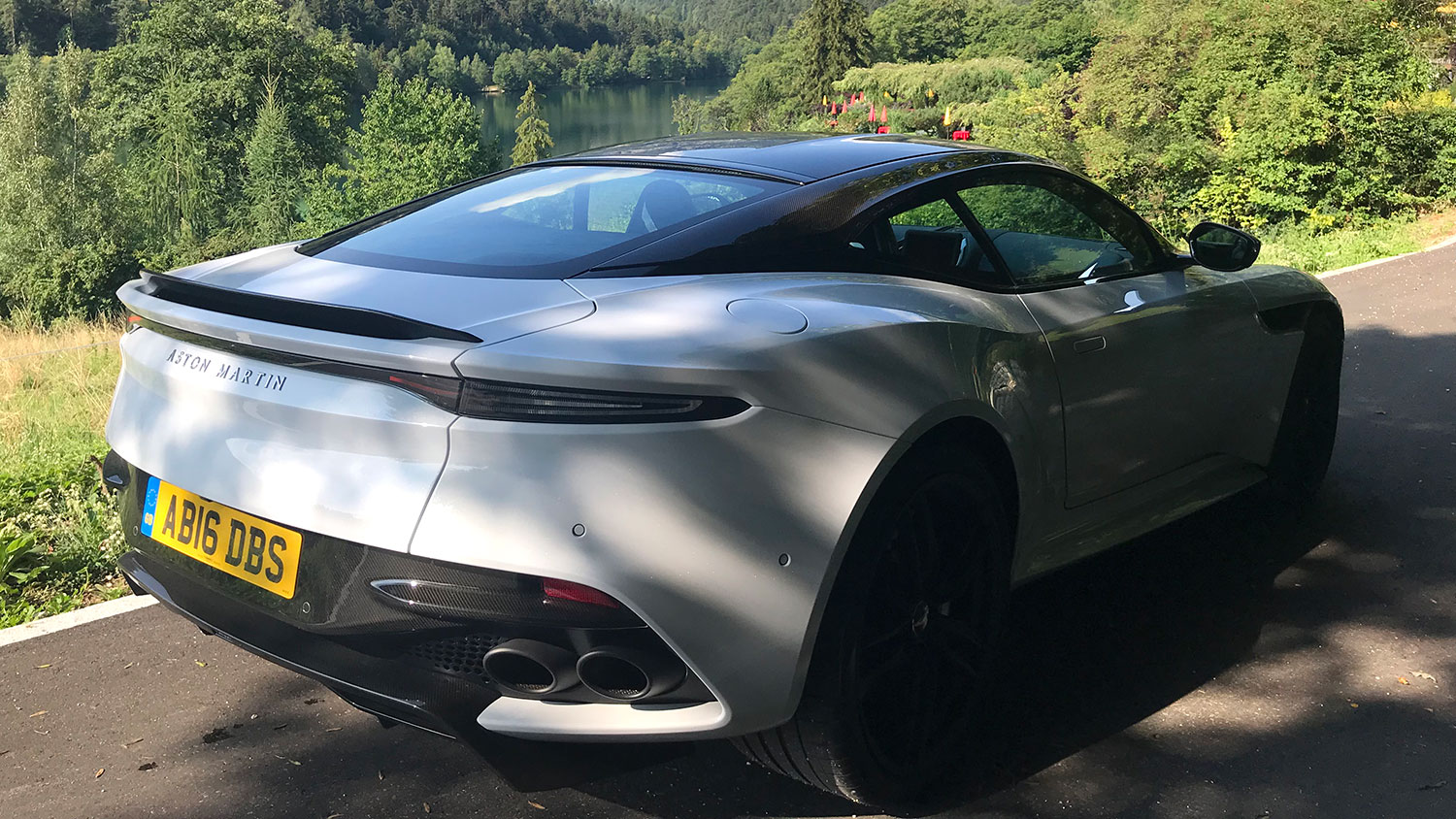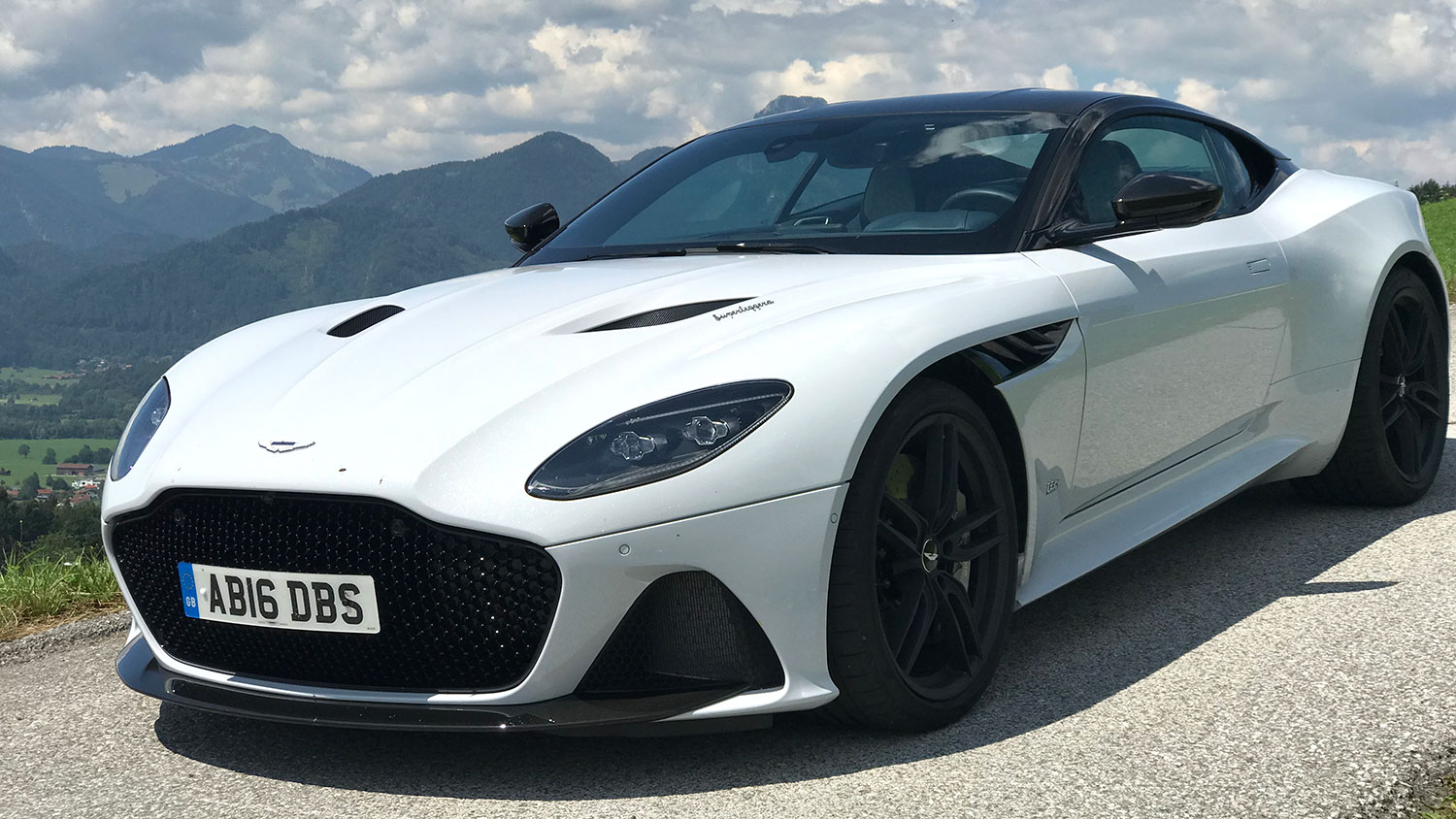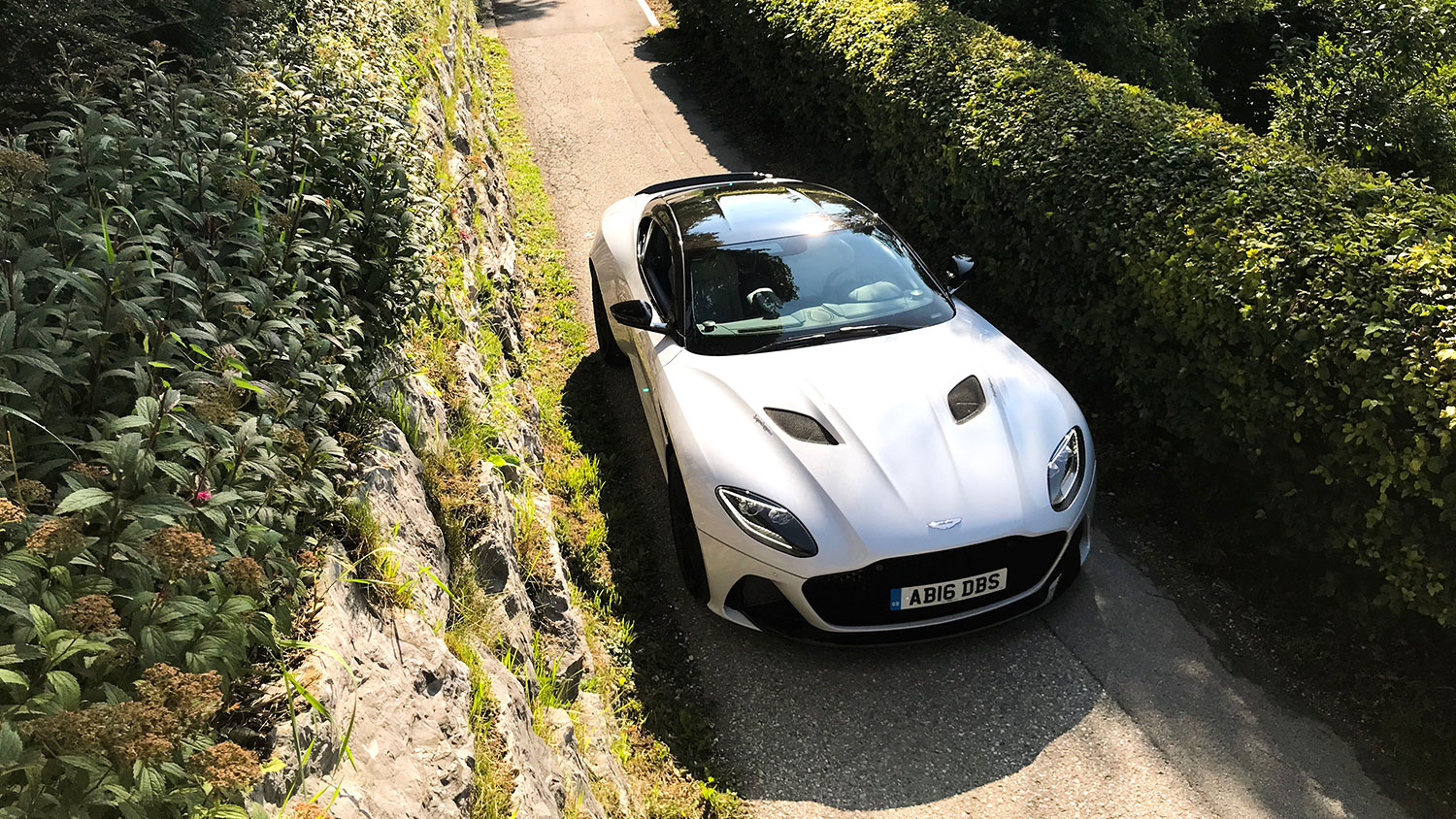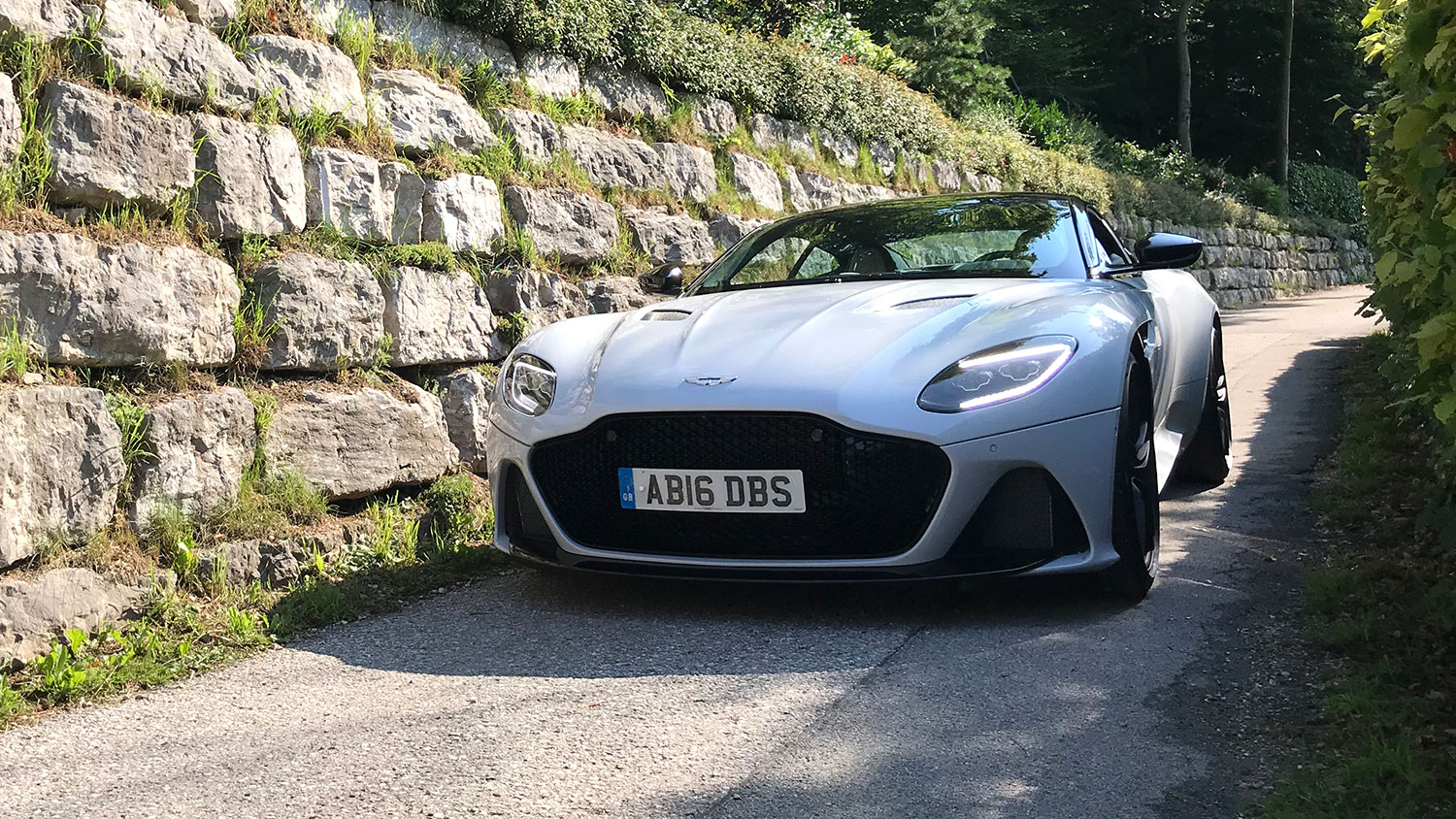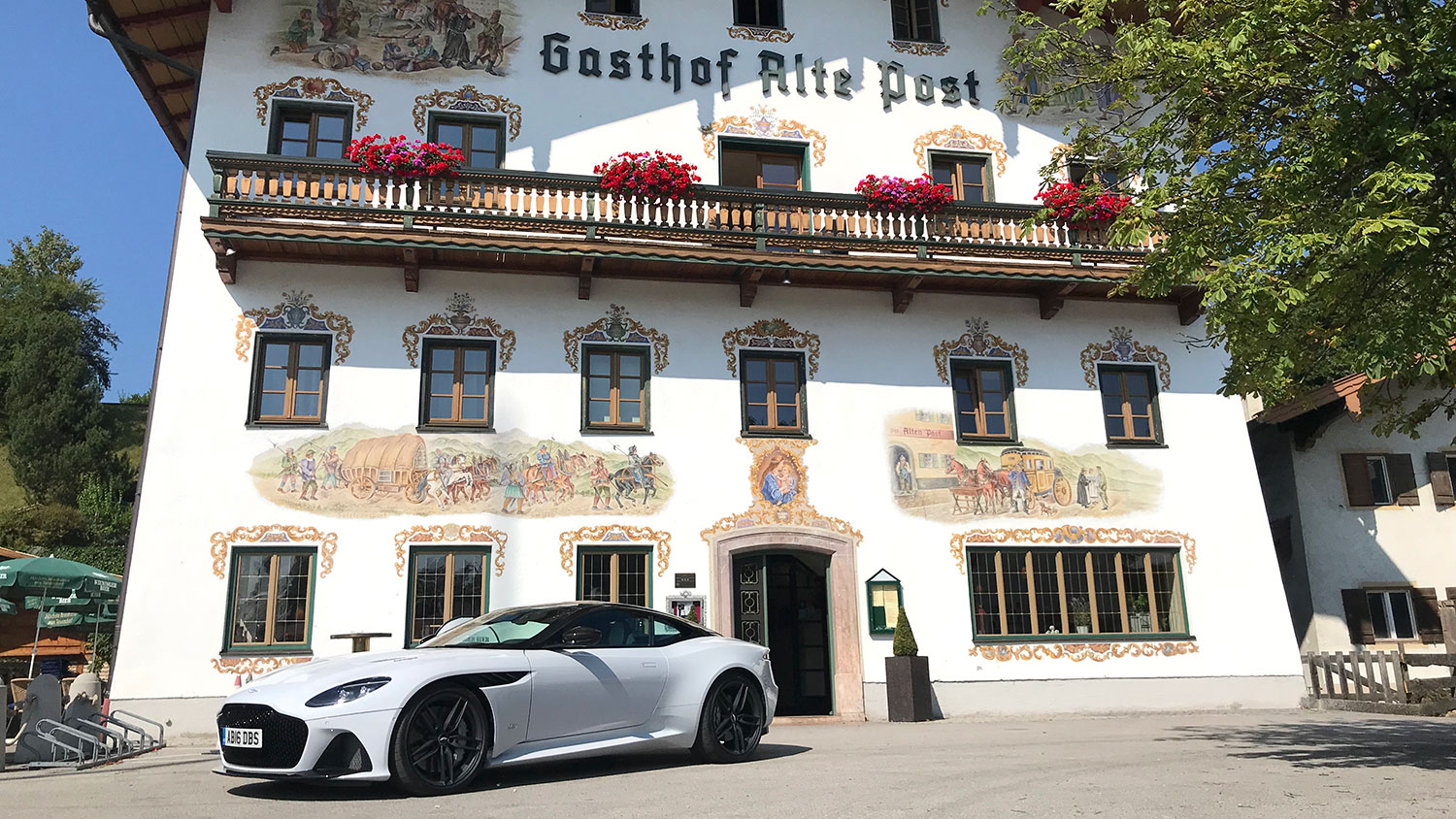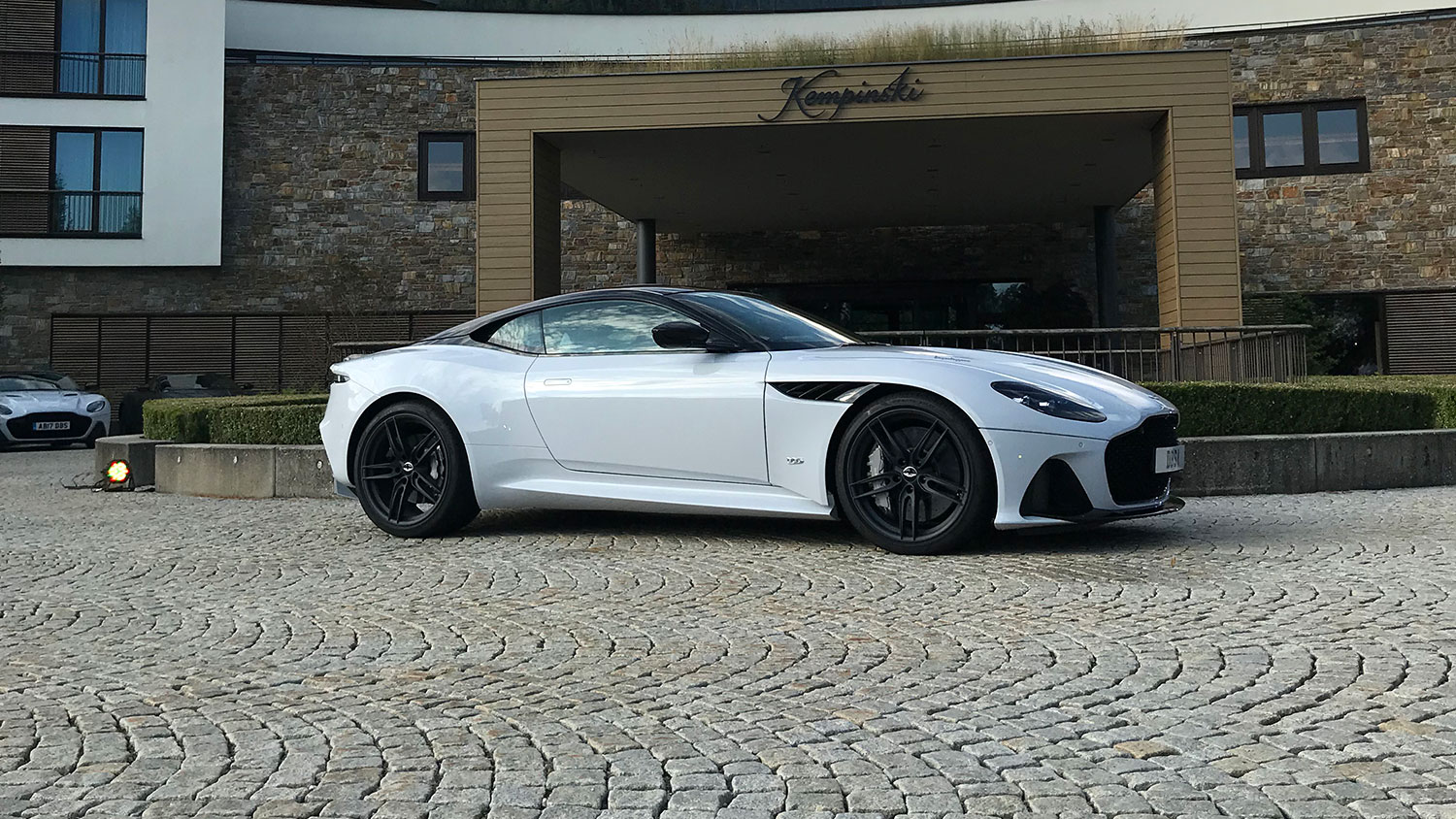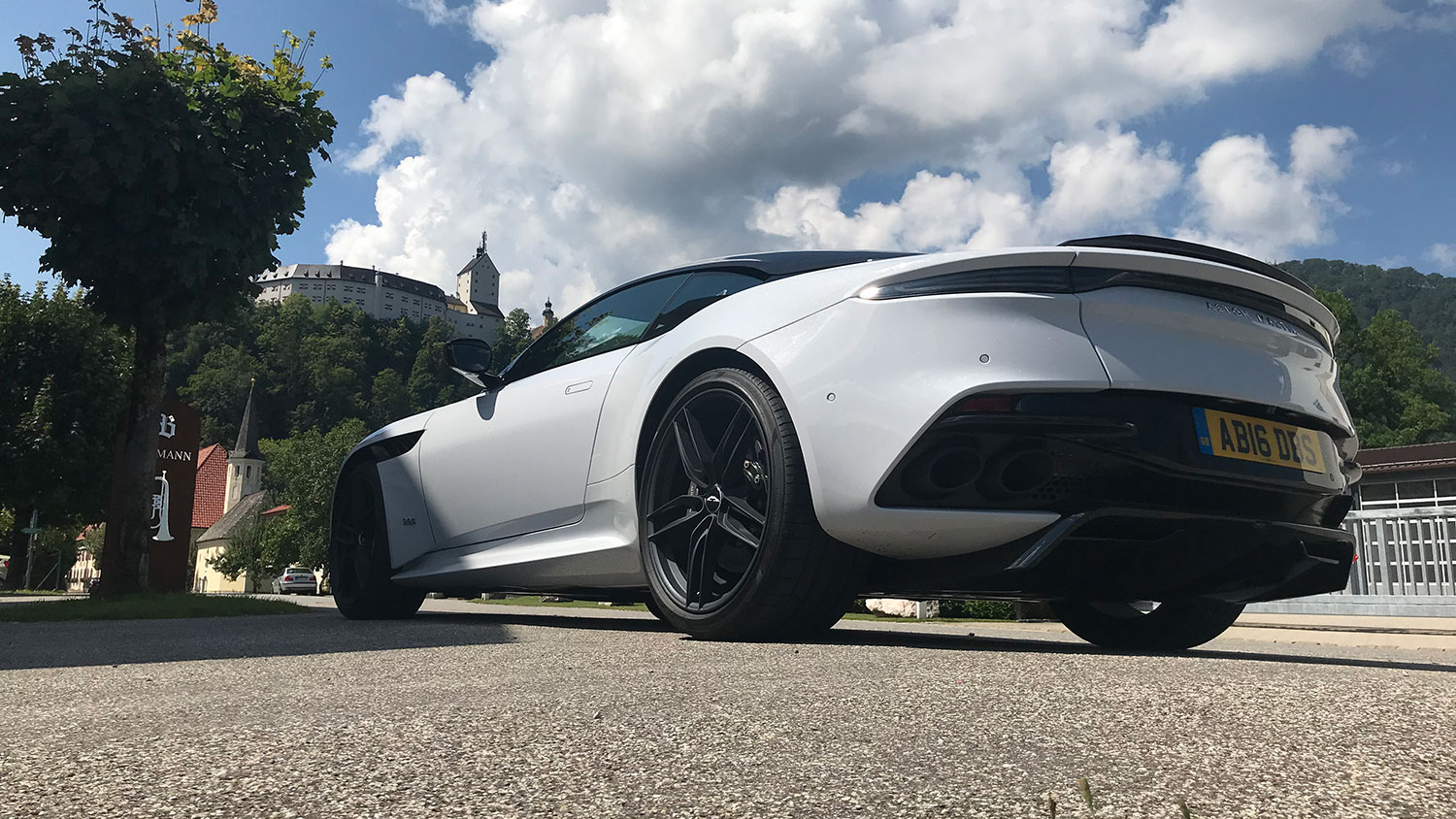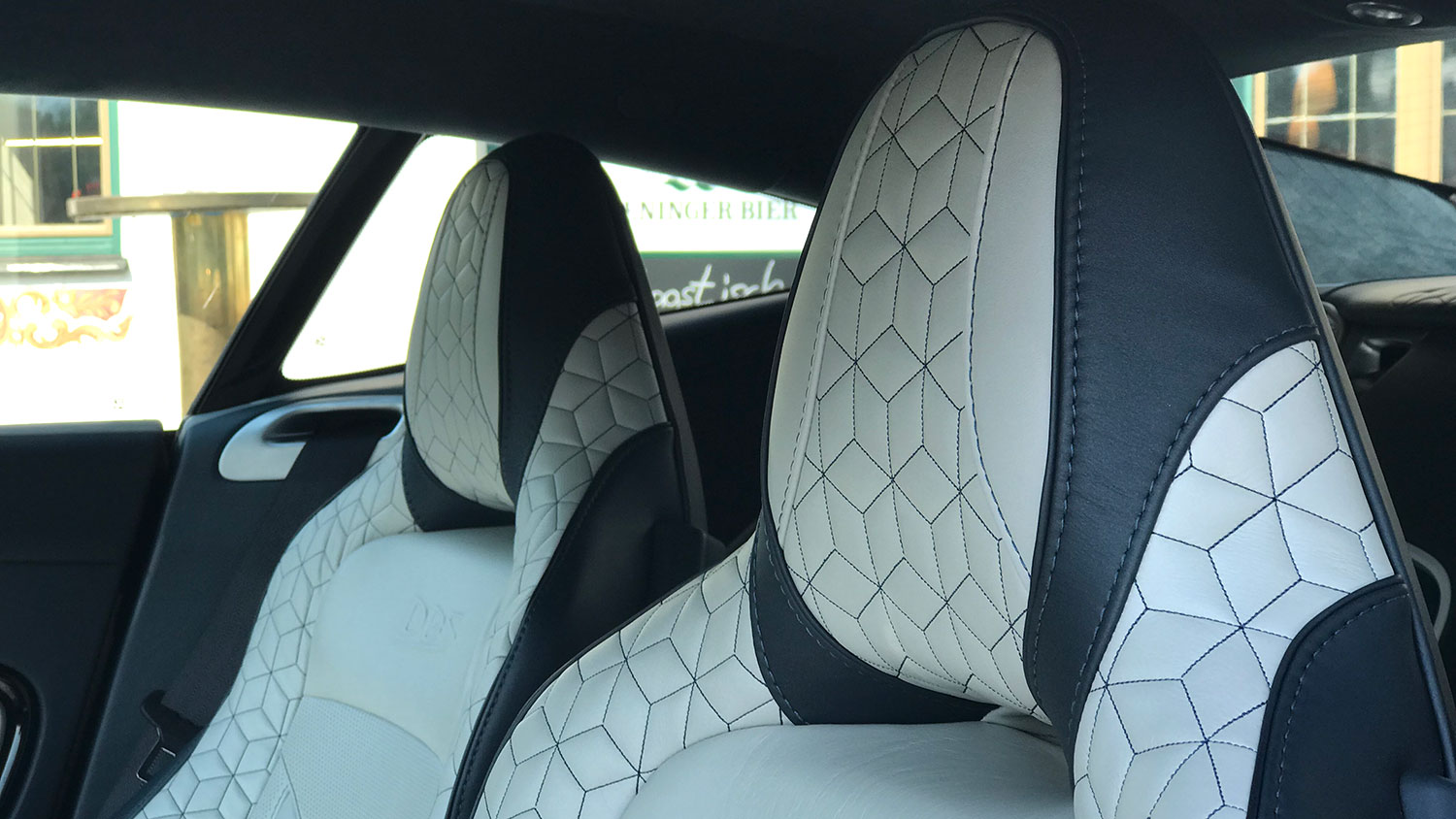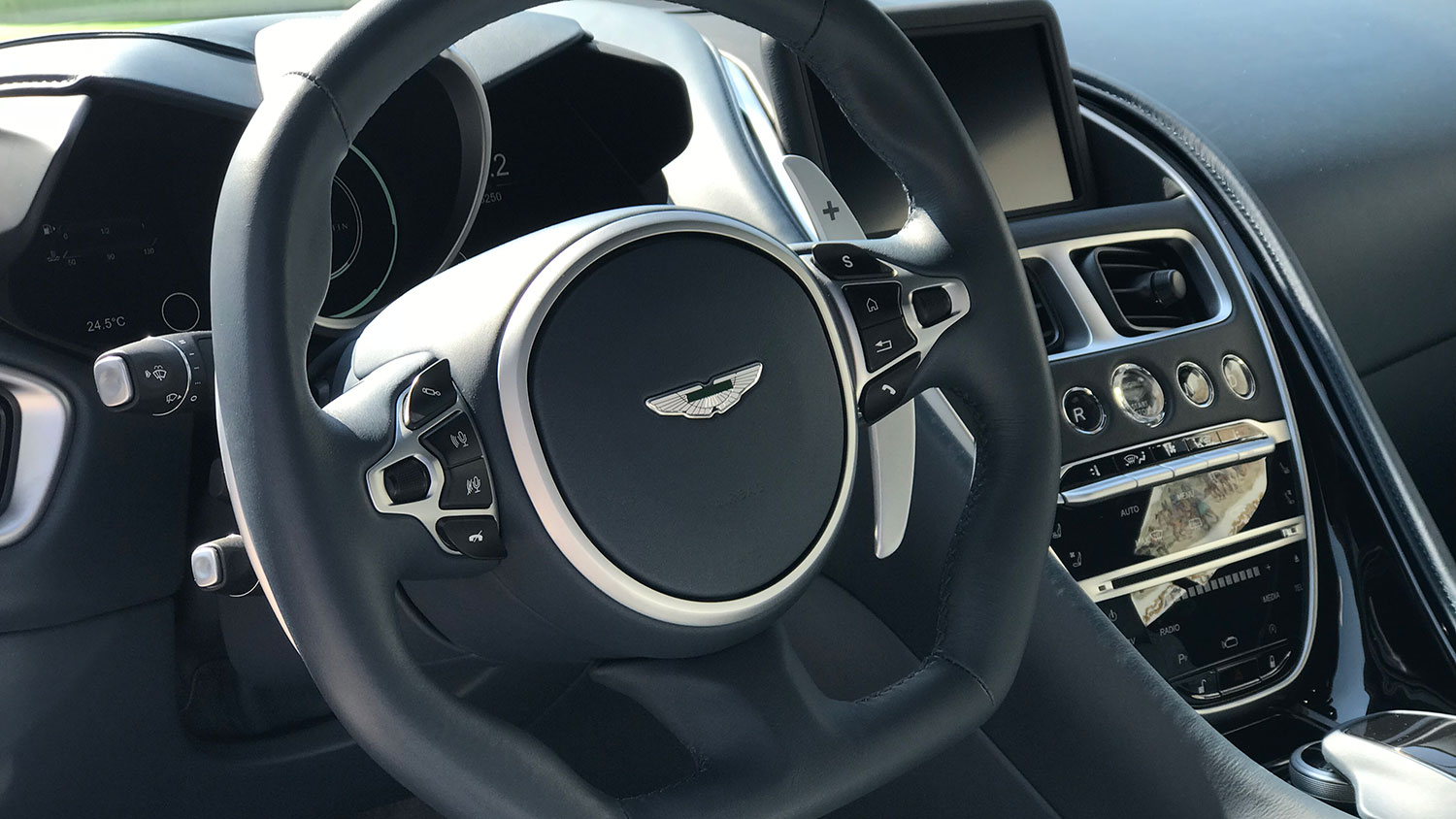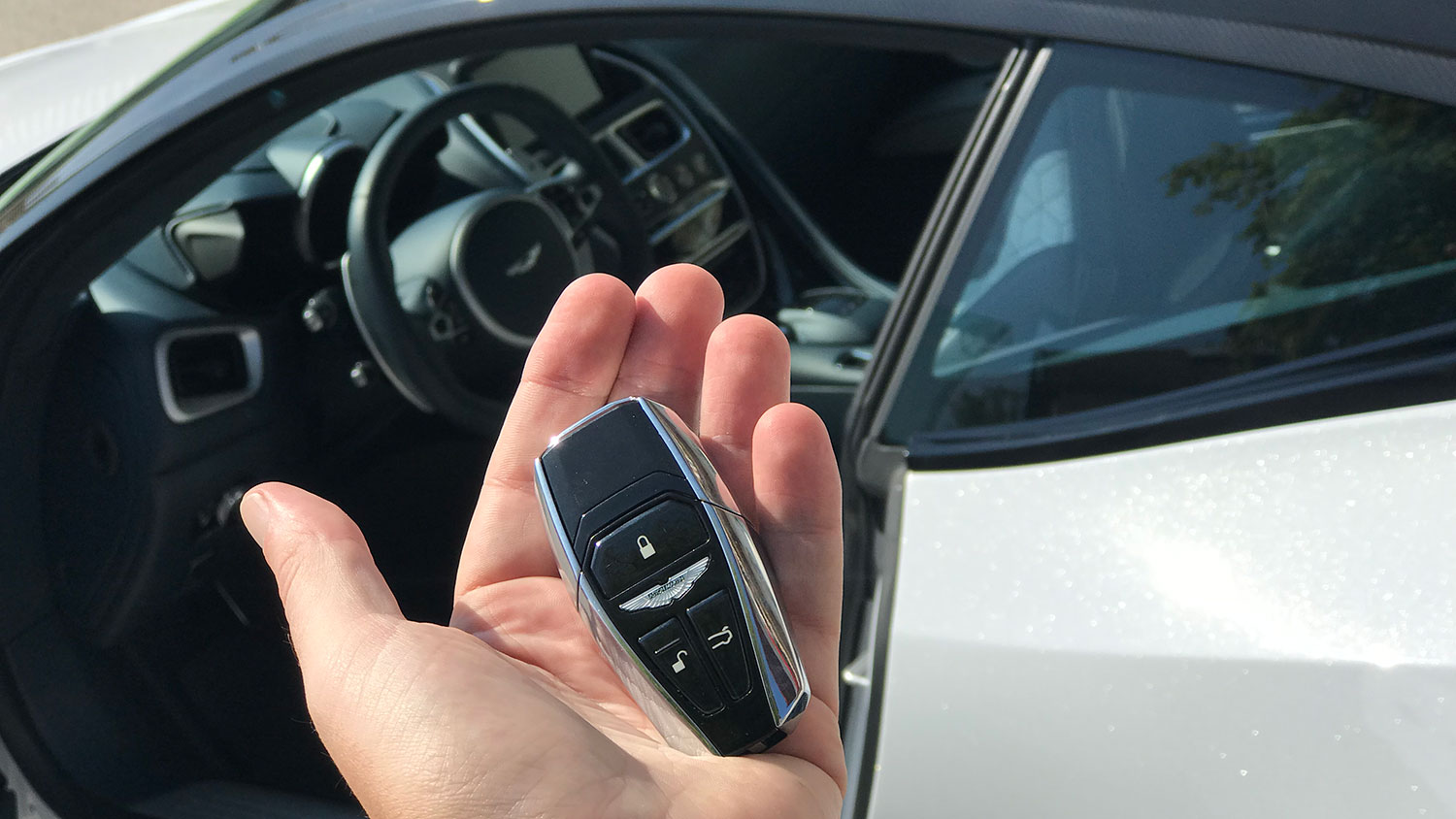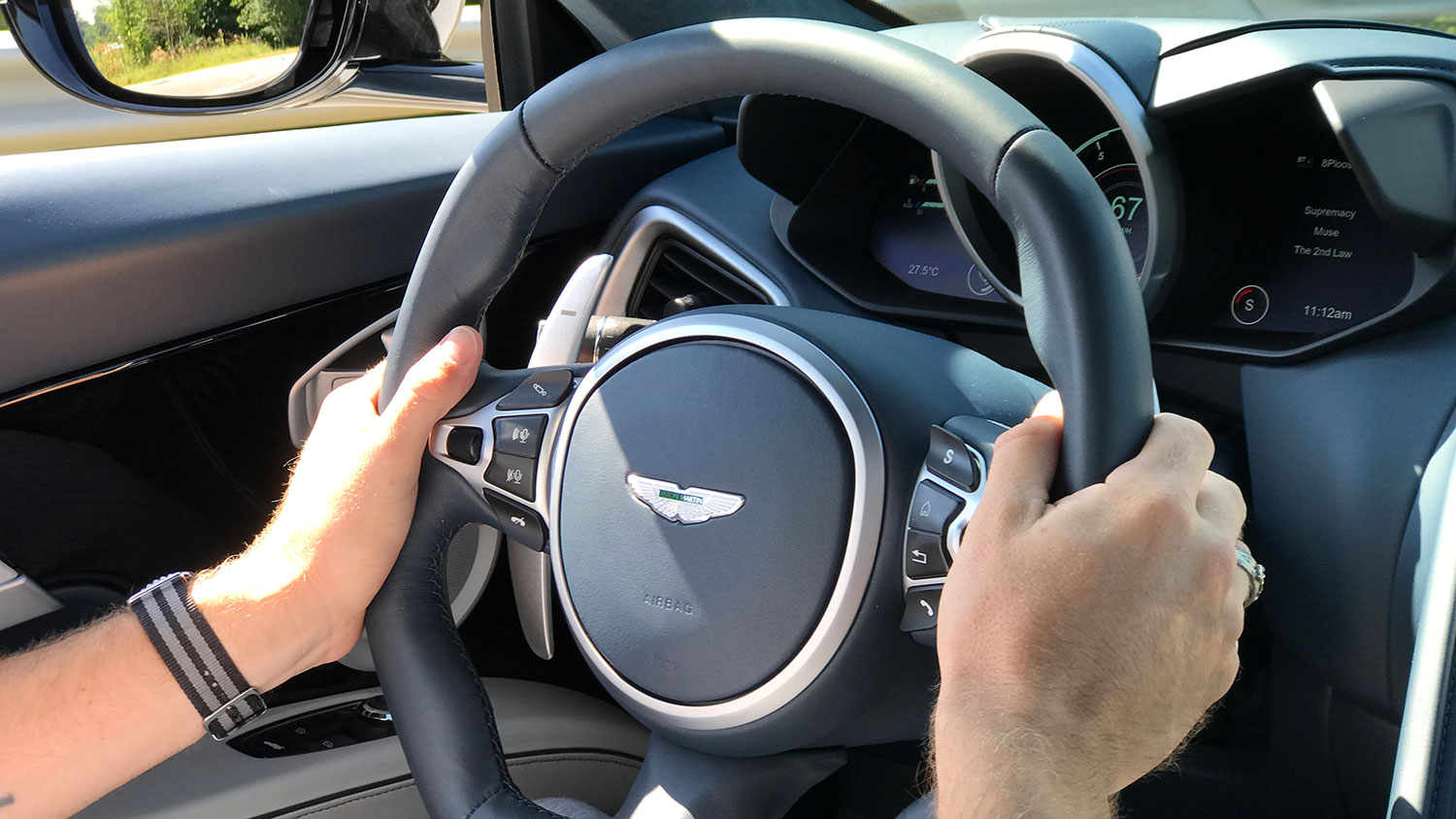It’s midnight here in Germany. I’m doing my best to find anything that’ll lull me sleep. Just as my eyes begin to feel heavy, lightning illuminates the Alps. The mid-air electric whip is followed by a crack of thunder that reverberates my room’s windows. A momentary thought crosses my mind in the now once again darkened room: “What foul beasty have the gods sent to Earth?”
When morning comes, I find the monster that haunted my night: Aston Martin’s fanged and feral DBS Superleggera, A 715-horsepower demon aimed squarely at devouring every highway, byway, interstate, autobahn, autostrada, and road from Germany to clear across the globe. The DBS Superleggera isn’t a super grand tourer, it’s a gamma ray-bombarded kaiju that’d kick the Hulk’s ass while looking as if it just left a Saville Row tailor. I fucking love it.
Rounding the first corner out of earshot of the hotel and the various lovely people wearing Aston Martin polos, I level the accelerator for my first full-throttle test. The twin-turbos whistle, the V-12 bellows, and I’m left in hysterics that would likely have psychologists suggest I be strapped into a straight jacket. Straights just no longer exist in the DBS Superleggera. You leave the corner, engage its hyperdrive, and you’re at the next corner. The Millennium Falcon would have a hard time keeping up with the DBS Superleggera on the Kessel Run.
The Aston Martin’s psychotropic power emanates from a newly reconfigured 5.2-liter V-12. Though it shares most of its components as the engine found in the standard DB11, Aston Martin’s engineers and black magic practitioners cranked up the boost so that each turbocharger is putting out a gloriously ludicrous 14 psi of boost. Both whistle so loudly you’ll plead with the Fates for more wide-open, windows-down straights.
The Aston Martin’s psychotropic power emanates from a newly reconfigured 5.2-liter V-12.
With some additional internal wizardry, as well as new ducting for cooling, Aston’s massaged 715 horsepower and 664 lb-ft of torque from the motor, though that feels like a conservative figure. In practice, and along one of Germany’s unrestricted sections of the Autobahn, the DBS Superleggera pulls as if it has 800-plus British ponies underneath the carbon fiber clamshell hood. FYI, on that section, and without really trying, I saw an indicated 276 kph. Converted to American, that’s 172 mph. The speed capable by the DBS Superleggera is supercar-shaming.
The DBS Superleggera isn’t, however, a one-trick, straightaway savage incapable of keeping up with its supposedly more athletic competition. Prepare to feel G-forces you’d scarcely believe a relatively heavy grand tourer able to muster.

Like the engine, the DBS Superleggera shares the same chassis architecture as the DB11, but it’s stiffer, lighter, and designed for the punishment. Up the German mountain passes that closely resemble a piece of cooked linguine lying atop your kitchen counter, hunting and killing apexes barely perturb the DBS Superleggera. Tried and true mid-engine supercars would have a hell of a struggle keeping the DBS Superleggera either off their ass or from passing them. In fact, later in the day, with a new Porsche 911 GT3 RS — a car bred from true race cars — was left in the V-12’s aural wake.
Part of the car’s sure-footedness comes down to the made-for-DBS-Superleggera-only Pirelli tires. Grip is never not available. Though, with such a long nose and heavy engine, the prevailing opinion would be that the DBS Superleggera would understeer, an issue that plagued the standard DB11 V-11. In the DBS Superleggera, nothing. There’s nary a whisper of understeer.
Here’s how the DBS Superleggera corners. First, you see the corner. You then decide your path of travel and velocity. Turn the expertly-tuned weight of the steering wheel. Feel the tires grip. Wish you had a fighter pilot’s F-suit. Level the throttle on corner exit. And giggle while watching the speedometer skip ahead by tens of mph. Repeat as necessary or as wanted. Even when the rear tires are coping with the immensity of the car’s power and torque, the Pirellis hold up to the strain brilliantly.
One issue with Germany’s side of the Alps, however, is that it isn’t as chock full of the sort of perfect driving roads as Austria’s or Italy’s. Thus, getting to the roads where the DBS Superleggera’s handling and nuclear reactor could be exploited necessitated quick trips through quaint German towns at slug-like speed limits. But my momentary crawling plight gave me the chance to take a breath, calm my now racing pulse, and enjoy in the DBS Superleggera’s cabin.
As you’d expect from Aston Martin, the DBS Superleggera’s interior might as well be an exclusive club-like SoHo house. Carbon, aluminum, and Alcantara fabric are replete throughout. Yet, it’s the DBS Superleggera’s leather that takes center stage. Most automakers print “leather” texture patterns onto their respective upholstery. Not Aston Martin. The British marquee’s hides come from a single ranch in Scotland. There, the cows live an idyllic life on the moors without ever encountering barbed wire, leaving their skin tear free. Furthermore, the ranch where Aston Martin sources this leather picked an especially wooly-coated species so as to protect the hides from mosquitoes and midges, which, like barbed wire, would leave imperfections.
The resulting product is similar to 2,000-thread count sheets cooly brushing up against your warm skin and makes your pavement destruction all that more sublime. Same goes for the perfectly contoured sport seats. The only thing more coddled than your rear behind the wheel would be a perfectly poached egg. With that, and each town quickly disappearing in my rearview mirror, I smashed the throttle, the hysterics returned, and the lateral G-force encased me in the driver’s seat padding.
The DBS Superleggera is the sort of machine you want when crossing continents needs to happen not just quickly, but so speedily you accidentally set unofficial land speed records.
The DBS Superleggera is the sort of machine you want when crossing continents needs to happen not just quickly, but so speedily you accidentally set unofficial land speed records. It just swipes its claws at a sizable chunk of miles and rips them to shreds. The sort of wild monstrosity that propelled Hercules to be emblazoned on pottery and into legend.
After what seemed like only a few minutes, although I traveled a great distance based on my odometer reading, I stopped to take stock in the DBS Superleggera’s exterior and breathe in the German vistas. The exterior is the business. Though the styling is purposeful in its function, looking at it as art, it’s also positively breathtaking. The subtle, yet aggressive lines give the DBS Superleggera a sort of presence similar to a lion lying in the savanna’s tall grasses, waiting for the opportunity to strike at the unaware antelope.
Up front, the grille has been opened and given a maw you’d expect fangs to present in. It’s wide and low, which allows for better airflow into the harder working V-12.

Moving to the side, Aston Martin’s DB11 signature side curlicue is gone for a straked unit that aids air extraction out of the front wheel well, which not only helps in downforce but also to cool the massive carbon ceramic brakes. At the rear, Aston’s engineers gave the DBS Superleggera a double diffusor to keep it sucked to the road when climbing toward its 211 mph top speed. Finally, the pop-up spoiler found in the DB11 has been removed for a fixed carbon winglet. In person, the DBS Superleggera, though especially here in the mountains, is a sight to behold and feels like an instant classic.
This beast, however, isn’t cheap. Though neither is it too expensive, especially when you consider all that the DBS Superleggera is capable of. Starting price for the Aston Martin DBS Superleggera is $304,000. For most, that’s a quite difficult pill to swallow. And indeed, for just a normal grand tourer, it would be too great a price. But the DBS Superleggera isn’t “just” a grand tourer. Neither is it a super grand tourer as Aston Martin puts it. The DBS Superleggera is a straight-up supercar. In the right hands, it’ll shame mid-engine, bedroom-wall exotica at every twist and bend. But when you just want to cross continents, it will do so in a way that will shame most Rolls-Royce’s. In those terms, the DBS Superleggera is a bargain and honestly, after spending time behind the wheel dominating the German Alps, and given if my bank account could take the hit, I’d spec one immediately. Preferably in Zaffre Blue with silver forged wheels and a tan interior. I can dream, right?

